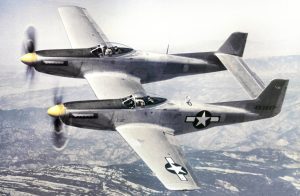
No airplane is complete without a fuselage. It serves as the main body of an airplane while containing the cargo and passengers. While most airplanes only have a single fuselage, however, some of them are designed with two fuselages. Known as twin-fuselage airplanes, they feature an entirely different body design than their single-fuselage counterparts.
Understanding Twin-Fuselage Airplanes
A twin-fuselage airplane is exactly what it sounds like: an airplane with two fuselages rather than one. The fuselages are blended together to create the perception of a single, large fuselage. Instead, they are connected via a shared wing and tail.
Twin-fuselage airplanes are distinguished from other airplanes by their side-by-side fuselage design. All airplanes have a body, which is the fuselage. Twin-fuselage airplanes, though, essentially have two adjacent bodies with a shared wing and tail.
Common Types of Twin-Fuselage Airplanes
Twin-fuselage airplanes have been around for over a century. Some of the first twin-fuselage airplanes emerged during World War I and World War II. Since then, dozens of twin-fuselage airplanes have been produced. Some of them are used in the military, whereas others are used for general civilian and commercial aviation.
Some of the most well-known types of twin-fuselage airplanes include the following:
- Caproni Ca.4
- Northrop Grumman B-2 Spirit
- Boeing 727-200F
- NASA Space Shuttle Carrier Aircraft (SCA)
- Radley-England Waterplane
- Wagner Twin Cub
Purpose of Twin-Fuselage Airplanes
You might be wondering what purpose, if any, twin-fuselage airplanes serve. After all, most airplanes can take off and fly just fine with a single fuselage, so why did engineers decide to push the boundaries with twin fuselages?
With two fuselages, twin-fuselage airplanes can carry more cargo. Fuselages aren’t designed strictly for passengers; they are also used for cargo. Twin-fuselage airplanes have two fuselages to accommodate cargo.
Twin-fuselage airplanes are incredibly stable. Floatplanes, for instance, are often designed with two fuselages for this reason. With two fuselages, floatplanes don’t need stabilizing floats.
Some twin-fuselage airplanes are used for research and development purposes. They allow aerospace companies to test new technologies. Thanks to their dual-fuselage design, researchers can explore alternative technologies that aren’t possible with single-fuselage airplanes.
Disadvantages of Twin-Fuselage Airplanes
Of course, there are disadvantages associated with twin-fuselage airplanes. They are highly complex to design and maintain. This results in higher manufacturing costs as well as higher maintenance costs.
Twin-fuselage airplanes also have different flight characteristics than traditional single-fuselage airplanes. Even if a pilot knows how to fly a single-fuselage airplane, he or she may not know how to fly a twin-fuselage airplane.



